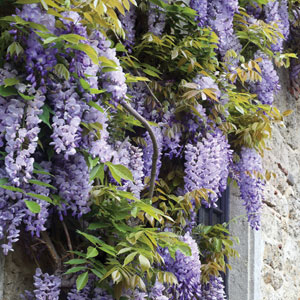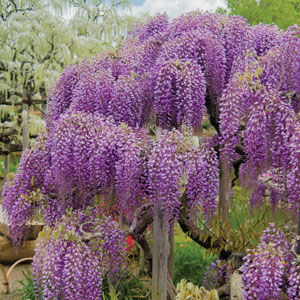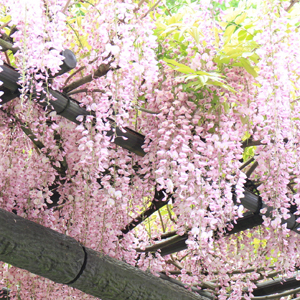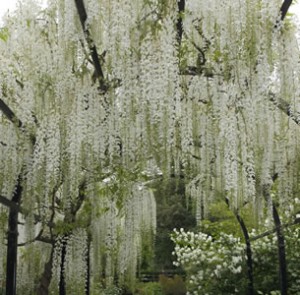Wisteria Growing Guide

What is Wisteria?
Wisteria (Wisteria spp.) is a vigorous deciduous climber. It is part of the Fabaceae family and is native to Japan, China and the USA depending on the species. There are many different species and varieties of wisteria which effects the flower size, colours and time it flowers; colour, look and texture of the foliage as well as the size and growth habit of the plant itself. Wisteria sinenses and Wisteria floribunda are the most common species found in Australia. During Spring flowers form on dense racemes of pink, white, violet or lilac will emerge all over the plant. The flowers will then give way to the new foliage that will sprout. The leaves are pinnate and pale green to bright lime green in colour depending on the variety. The flowers will turn into the plants unique seed pods. When you first plant your wisteria sometimes it will go years without flowering. Don’t worry as some need time to establish before flowering. They prefer their tops in the sun but their roots in a cool moist position. They will need a strong support to grow on, so they are perfect for growing over a pergola or arch, on walls or fences or along a verandah. Some varieties come in dwarf size and can be planted in pots.
Benefits of Growing Wisteria
Wisteria are hardy and fast growing plants. They are ideal for covering pergolas or arbours and providing much needed shade over the Summer months. They put on the most stunning display when in full bloom which are lightly fragrant. It will attract bees and butterflies to your garden.
How to Grow Wisteria
Climatic Zones
Cool to mild tropical.
Plant Size
Sizes vary.
When To Plant Wisteria
Can be planted at any time.
Soil Preparation
Moist, deep and fertile soils are preferred however will tolerate many soil types. Add blood and bone or a complete fertiliser before planting.
How To Plant Wisteria
Plant in full sun, 50-70cm apart with the plant crown at soil level.
Wisteria Plant Care
Water well during dry spells, and regularly if grown in a pot. Drought tolerant once established.
Wisterias are vigorous and yet easily controlled with secateurs. Prune to shape and direct plant where required. When the plant is young and fast growing a lot of pruning and shaping is required. Firstly allow the plant to grow to the required height then remove top shoots to encourage side shoots which you tie into the desired position. Once the plant reaches full size, all you need do is prune unwanted growth. To reshape or rejuvenate an old plant, cut back very hard remembering that any drastic shaping should be done in Spring after flowering. Don’t prune wisteria in Winter as Winter pruning removes flowering wood. As the plant matures, the need for pruning is reduced as its growth slows. Be careful as plant can become very heavy, so ensure that the support used is suitable for the job. Can be trained as a standard very easily, simply prune off laterals until stem reaches desired height.
Feed with a general fertiliser in early Spring and mid Summer to get good fast growth when the plant is young. Once it has reached the desired size, feed less because too much food and water can mean lots of growth at the expense of flowers.
Recommended Wisteria Varieties
The Wisteria is a spectacle to look at when in full bloom.










